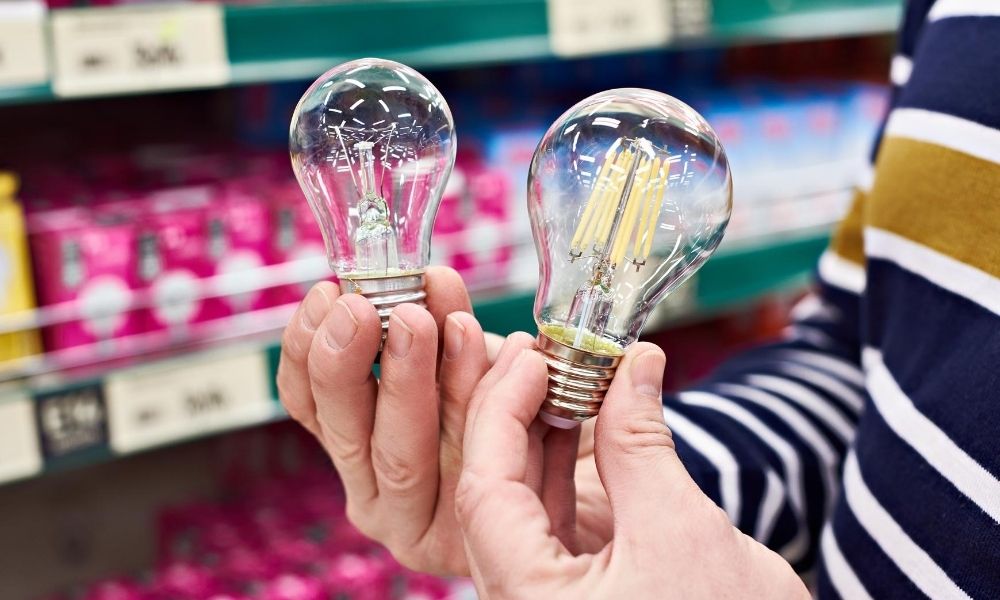If you’re looking to replace the lighting in your home or commercial building, you might be wondering what the difference between LED and incandescent bulbs is. Which type should you buy? Each type of bulb has its own advantages. This comparison will help you determine which bulb is the best for you.
What Are Incandescent Bulbs?
Incandescent bulbs are classic light sources you most likely already use. They light up by heating a copper wire filament inside the gas-filled bulb to a temperature that results in light.
Benefits of Incandescent Lights
Incandescent lights are relatively cheap to manufacture, which makes them cheap to purchase. As traditional light sources, these bulbs are widely available and adaptable to various ranges of voltages, outputs, and currents. These bulbs also have a high color rendering index (CRI), meaning they give off an accurate depiction of color in relation to the light they emit. Incandescent bulbs’ CRI rating does drop over time; however, the drop is only slight.
Downsides of Incandescent Lights
Incandescent lights do have a few downsides to consider. They have one of the worst energy-efficiency ratings in light bulbs, making them rather unsustainable and resulting in higher electric bills. Incandescent lights also have a short life span, operating for roughly 1,000 hours per bulb. Lastly, they’re omnidirectional, meaning they produce light in all directions. This can be inefficient because the light must be reflected and directed to the specific spaces that need light.
What Are LED Bulbs?
LED stands for “light-emitting diodes.” A diode is an electrical device in which electricity flows through two electrodes. Diodes are made of semi-conductive materials that conduct electricity based on specific currents, voltages, and light intensity. When a current passes through a semiconductor, the light will emit.
Benefits of LED Lights
LED lights have many benefits that incandescent lights cannot offer. LED lights are extremely energy-efficient, and they have a longer life span. One LED light bulb can run as long as 50 to 100 incandescent bulbs. LED bulbs also have a shorter warm-up phase, and they offer directional light for better efficiency.
Downsides of LED Lights
The biggest downside of LED lights is their cost. Currently, the upfront purchase for an LED bulb is relatively more than an incandescent bulb. However, their long life span balances out this initial cost.
The differences between LED and incandescent lightbulbs offer strong advantages for both options. LED bulbs are becoming more viable options for all different kinds of users due to their low cost and long life span. Interior and exterior home lighting, commercial lights, and even LED streetlights for sale are taking over the lighting market. Consider using LED bulbs for a long-lasting, energy-efficient light source.


